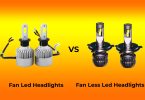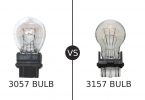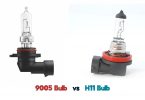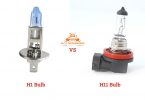Brakes light are vital to your safety while riding in the car. The absence of a brake light can lead to a ticket or even an accident. Knowing how to check your brake lights will alert you when a brake light goes out. Here we will look at how the brake lights work, the reasons a brake light goes out, three methods to check the brake lights, and how to replace a brake light bulb.
How a Brake Light Works
As part of the electrical system, your brake lights draw their power from the battery. When you step on the brake, it engages the brake switch that sends the current through the wire harness into the bulb’s socket and lights the bulb.
When you press the brake and the brake light does not illuminate, there is a fault somewhere in the system. There are four common reasons for the unlit brake light. Let’s explore them further.
Reasons for loss of a brake light
- Bad brake switch: Most brake switches are found above the brake pedal. Frequent use of the brake pedal wears it out over the years. Its position allows dirt and dust to collect, causing interference with the positive contact and how the signal is transmitted.
If all your brake lights are out simultaneously, it is likely due to a faulty brake switch.
- Fuse is blown: If your brake lights on both sides are out and the brake switch is working fine, you may have blown a fuse. Most fuse boxes are on the passenger side, the inside left below the gear shift box. You can look for the burnt fuse (it has a burnt silver bottom as opposed to shiny metal), remove them one by one until you find the blown fuse, or look in the owner’s manual at the fuse box schematic and find the fuse for the brake lights. Once you locate the blown fuse, replace it with the same color (each color has a different amperage) fuse you pulled out, and you should have brake lights again. Some vehicles have extra fuses in the fuse box. You can purchase a small package of multi-amp fuses online or in an auto supply shop.
- Brake bulb is burnt out: Considering how often you use the brake pedal, you can understand how a bulb can burn out. Unlike new vehicles with LED lights that last much longer, older vehicles have a standard car bulb. Sometimes getting to the brake bulb to change it is tricky, but it is a quick, easy, and inexpensive process. You simply swap out one brake light bulb for the other.
- Faulty brake light socket: If the brake light bulb is fine, but you have only one brake light, check that bulb’s socket. Due to the brake lights’ location, the connection to the socket can get dirty, be corrosive, or damage to the wiring. Replacing the socket can be as easy as plugging in a new socket or clipping the old wires and using a splicing kit to rewire the original socket. It is cheaper than a ticket for no brake light and can be done in half an hour.
Methods for Checking Your Brake Lights
1. Two-person method
This method is fast and the easiest way to check your brake lights. One person stands behind the car while the other person starts the car and presses the brake pedal. Either the lights come on, or they won’t. Check completed!
2. Wood method
This method only needs one person! Start your car, depress the brake pedal, and wedge the piece of wood between the top of the brake pedal and the bottom of the car seat. Leave the car in park, go to the back of the vehicle and check the brake lights.
3. Rearview mirror method
Back your car into the garage or close to a closed garage door at dusk. Start the vehicle and apply the brakes. You should be able to see the red brake light reflection on the garage wall or the door in your rearview mirror. This can also be done on any reflective surface, like a storefront window. If there is no red reflection, you have no brake light.
When to check the lights
Checking your brake lights should be done at least every six months. Make sure one of the checks is done before the winter when it gets darker earlier. My husband and I watch each other’s lights as we leave for work, so we don’t have to do a six-month check. Several times, a bulb was out, and one of us picked up the lightbulb on the way home. You can purchase brake light bulbs online or at a store. If you don’t know the type of bulb you need, check your owner’s manual or the automotive parts book in the store and look up the light bulb you need by the car’s make and model. Buying the bulbs in a multi-pack saves you time and money, and you always have a replacement bulb on hand!
How to Replace a Brake Light
Tools
- Replacement brake bulb
- Flashlight
Step 1: Using one of the methods above, figure out which bulb is the brake light. Many cars have multiple bulbs under the lens. Knowing the location of the brake bulb will make replacing it much easier.
Step 2: Today’s vehicle allows access to the brake and tail light bulbs through the trunk. Open the trunk so you can see the lights’ wiring assembly. Use your flashlight to identify the brake light housing, then find the brake light plug.
Step 3: To remove the bulb, turn the plug on the brake light counterclockwise and remove the burnt-out bulb. Screw in the replacement bulb.
Step 4: Replace the bulb and plug into the assembly, turning it clockwise and locking it in place. Ensure the plug holding the bulb is soundly in the light assembly.
Step 5: Recheck the brake lights once you finish ensuring it works using the above methods.










Leave a Comment